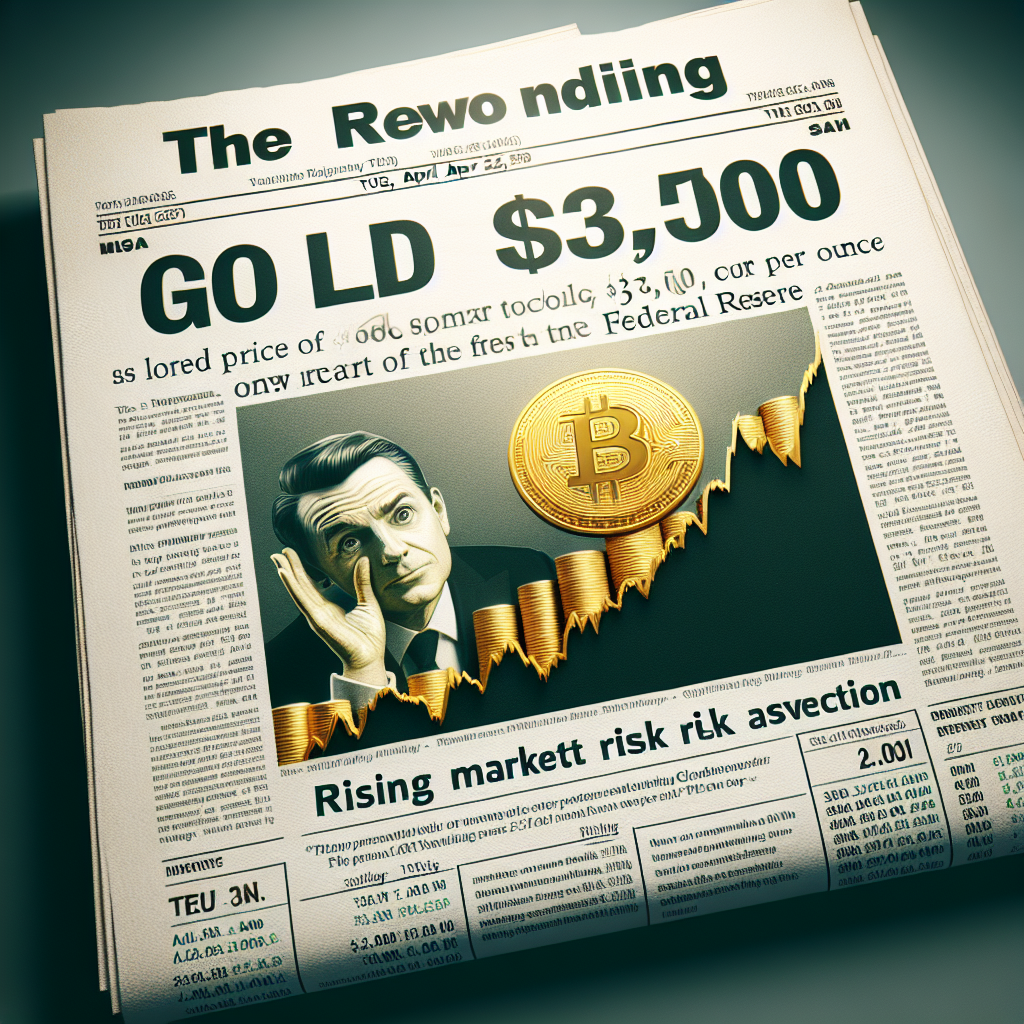The price of gold surged past $3,500 per ounce on Tuesday, April 22nd, breaking a new historical record amid President Trump’s calls for the Federal Reserve (Fed) to lower interest rates, indicating that market risk aversion continues to escalate. Analysts predict that if political and monetary policy uncertainties persist, there is still room for gold prices to rise.
As of 07:43 Greenwich Mean Time (3:43 AM Eastern Time), spot gold rose by 1.5% to $3,474.41 per ounce, briefly touching $3,500.05 during trading. U.S. gold futures increased by 1.8%, reaching $3,485.10. According to the Financial Times, gold prices rose by as much as 2.2% that day, with a cumulative increase of nearly 33% so far this year.
The current uptrend is being driven by political and financial market uncertainties.
President Trump took to the Truth Social platform on Monday, branding Fed Chairman Jerome Powell as “Mr. Too Late” and urging the Fed to cut interest rates “NOW.”
Alexander Zumpfe, a precious metals trader at Germany’s Heraeus Metal Company, told Reuters, “The latest catalyst for the gold price rally is President Trump’s public criticism of Powell.”
“With ongoing political uncertainty and monetary policy concerns, gold may continue to be supported,” Zumpfe said. “The current key technical support levels are between $3,450 and $3,400 per ounce, with the next psychological target price being $3,600 per ounce.”
The divergence between Trump and Powell reflects market concerns about the Fed’s independence and future policy direction. Against this backdrop, U.S. stocks fell on Monday, with the S&P 500 index dropping by 2.4% and the Nasdaq falling by 2.6%. The U.S. dollar declined by 0.2% against major currencies on Tuesday, marking a nearly 10% depreciation this year. The yen rose above 140 against the dollar, the first time since September last year.
In addition, silver prices fell by 0.6% to $32.5 per ounce; platinum rose by 0.7% to $967.84; and palladium increased by 1.9% to $944.73.
Michael Feroli, Chief U.S. Economist at JPMorgan Chase, pointed out, “If the Fed’s independence is compromised, it could pose upside risks to the inflation outlook.”

